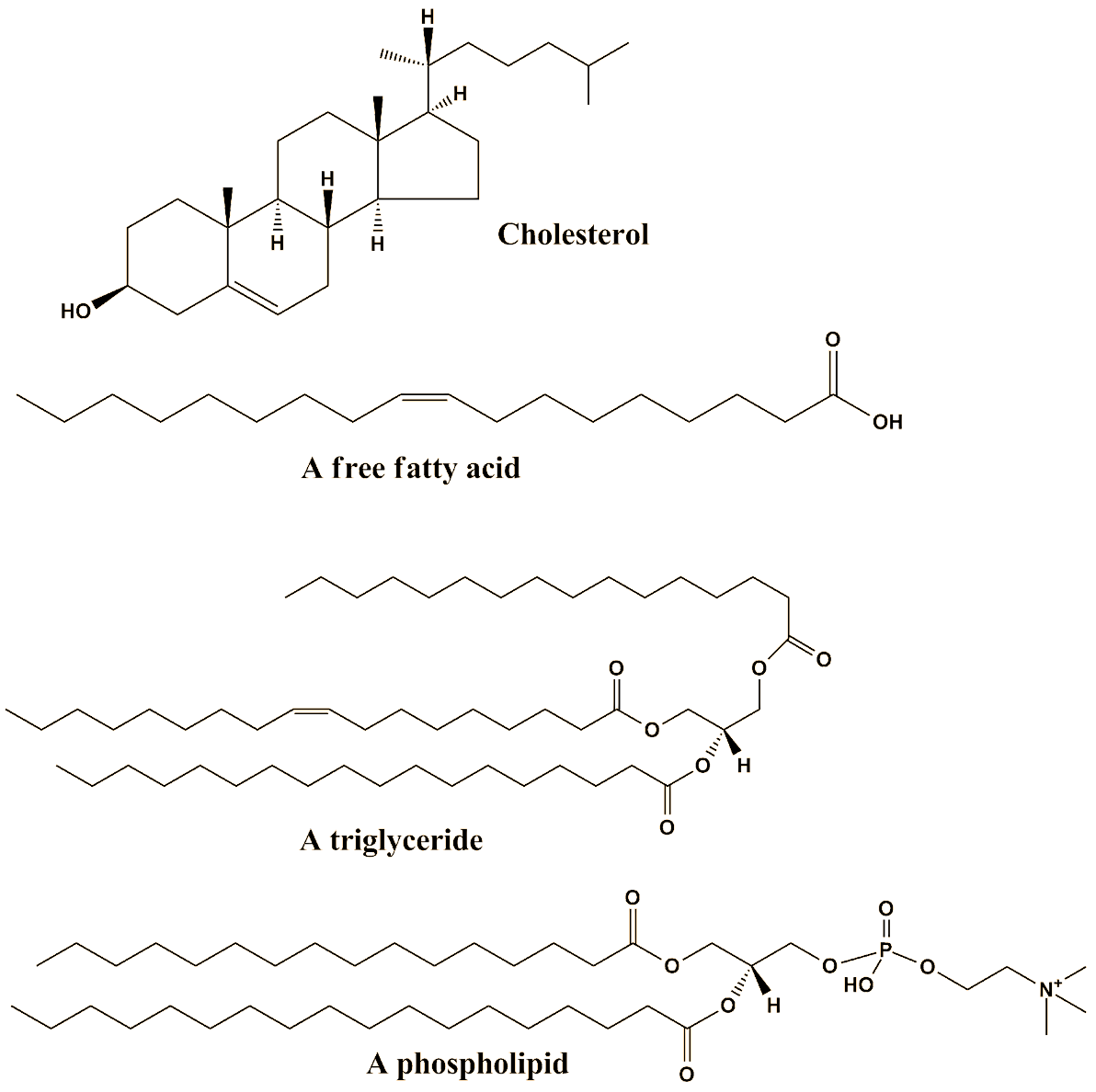
Describe the different types of lipids.
Answer
550.5k+ views
Hint:Organic compounds that are made up of hydrogen, carbon, oxygen atoms associated with various groups are known as lipids. They can be of different types based on their functions. They form the framework for the structure and function of living organisms.
Complete answer:Lipids are molecules that contain hydrocarbons and make up the building blocks of the structure and function of living cells. They are formed of fatty acids chain and glycerol. They are non-polar organic molecules that are soluble in only certain non-polar solvents and are insoluble in water because of their polar nature. The lipid molecules are synthesized in the liver in the human body. They yield high energy and have various functions in the human body. They are mostly stored in the adipose tissue of the body. They are a heterogeneous group of compounds that provide energy for different cellular processes. They are significant in the biological system and act as a mechanical barrier that divides the cell from the external atmosphere. They are a major part of the plasma membrane. They are classified into two main classes- non-saponifiable and saponifiable. They are of different types such as simple, complex, derived, precursor, saturated, and unsaturated.

Simple lipids are the esters of fatty acids with various alcohols. Fats and waxes are common simple lipids. Complex lipids are the esters of fatty acids having other groups in addition to alcohol or fatty acids. Phospholipids, glycolipids, sulfolipids, and amino lipids are common examples of complex lipids. Lipid soluble vitamins, hormones, ketone bodies, fatty aldehydes, etc, are common precursors or derived lipids.
Note: Lipids are made up of a glycerol molecule joined with three molecules of fatty acids. They form the structural component of the cell membrane. They can be of different types depending upon the side chain or group joined with them.
Complete answer:Lipids are molecules that contain hydrocarbons and make up the building blocks of the structure and function of living cells. They are formed of fatty acids chain and glycerol. They are non-polar organic molecules that are soluble in only certain non-polar solvents and are insoluble in water because of their polar nature. The lipid molecules are synthesized in the liver in the human body. They yield high energy and have various functions in the human body. They are mostly stored in the adipose tissue of the body. They are a heterogeneous group of compounds that provide energy for different cellular processes. They are significant in the biological system and act as a mechanical barrier that divides the cell from the external atmosphere. They are a major part of the plasma membrane. They are classified into two main classes- non-saponifiable and saponifiable. They are of different types such as simple, complex, derived, precursor, saturated, and unsaturated.

Simple lipids are the esters of fatty acids with various alcohols. Fats and waxes are common simple lipids. Complex lipids are the esters of fatty acids having other groups in addition to alcohol or fatty acids. Phospholipids, glycolipids, sulfolipids, and amino lipids are common examples of complex lipids. Lipid soluble vitamins, hormones, ketone bodies, fatty aldehydes, etc, are common precursors or derived lipids.
Note: Lipids are made up of a glycerol molecule joined with three molecules of fatty acids. They form the structural component of the cell membrane. They can be of different types depending upon the side chain or group joined with them.
Recently Updated Pages
Master Class 11 Chemistry: Engaging Questions & Answers for Success

Which is the Longest Railway Platform in the world?

India Manned Space Mission Launch Target Month and Year 2025 Update

Which of the following pairs is correct?

The Turko-Afghan rule in India lasted for about?

Who wrote the novel "Pride and Prejudice"?

Trending doubts
What is meant by exothermic and endothermic reactions class 11 chemistry CBSE

Which type of resource is iron ore A Renewable B Biotic class 11 social science CBSE

10 examples of friction in our daily life

Differentiate between an exothermic and an endothermic class 11 chemistry CBSE

Difference Between Prokaryotic Cells and Eukaryotic Cells

1 Quintal is equal to a 110 kg b 10 kg c 100kg d 1000 class 11 physics CBSE




